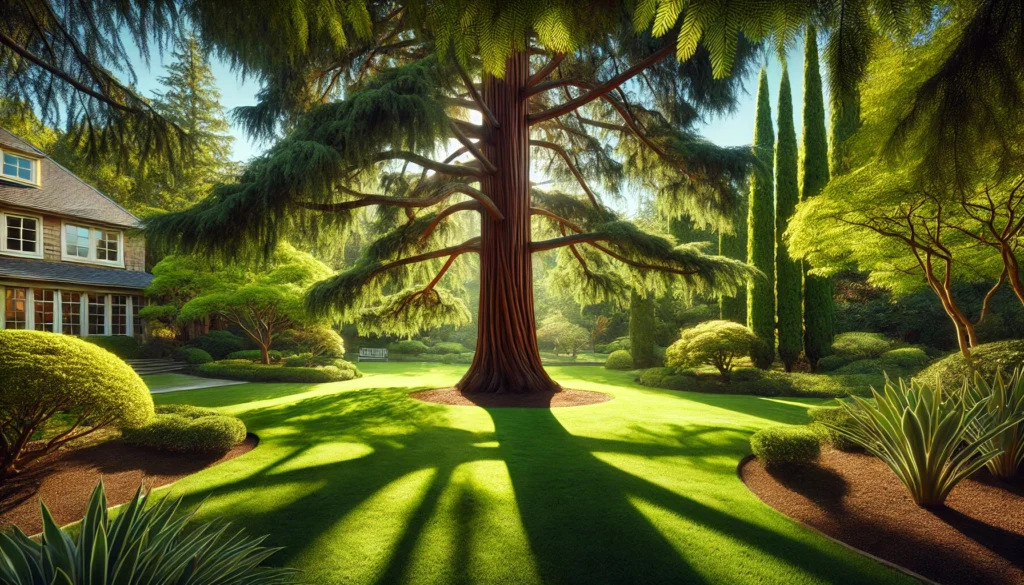
How to Grow and Care for a Sequoia Tree in Michigan: A Complete Guide for Success
Imagine having a towering sequoia tree standing proudly in your Michigan backyard—its majestic presence adding a touch of nature’s grandeur to your landscape. 
In this guide, we’ll walk you through the essential steps to successfully grow and care for a sequoia tree in Michigan. Whether you’re a beginner or an experienced gardener, we’ll cover everything from selecting the right spot to winterizing your tree for the colder months. Get ready to turn your dream of having a magnificent sequoia into a reality with practical, easy-to-follow tips!
Table of Contents
ToggleWhat is a Sequoia Tree? 
Sequoia trees are among the most impressive and ancient trees on Earth! Native to California, these giant evergreens are famous for their incredible size, long lifespan, and stunning beauty. There are two main types of Sequoias: the Coast Sequoia (Sequoia sempervirens) and the Giant Sequoia (Sequoiadendron giganteum). Both are known for growing to massive heights and living for thousands of years!
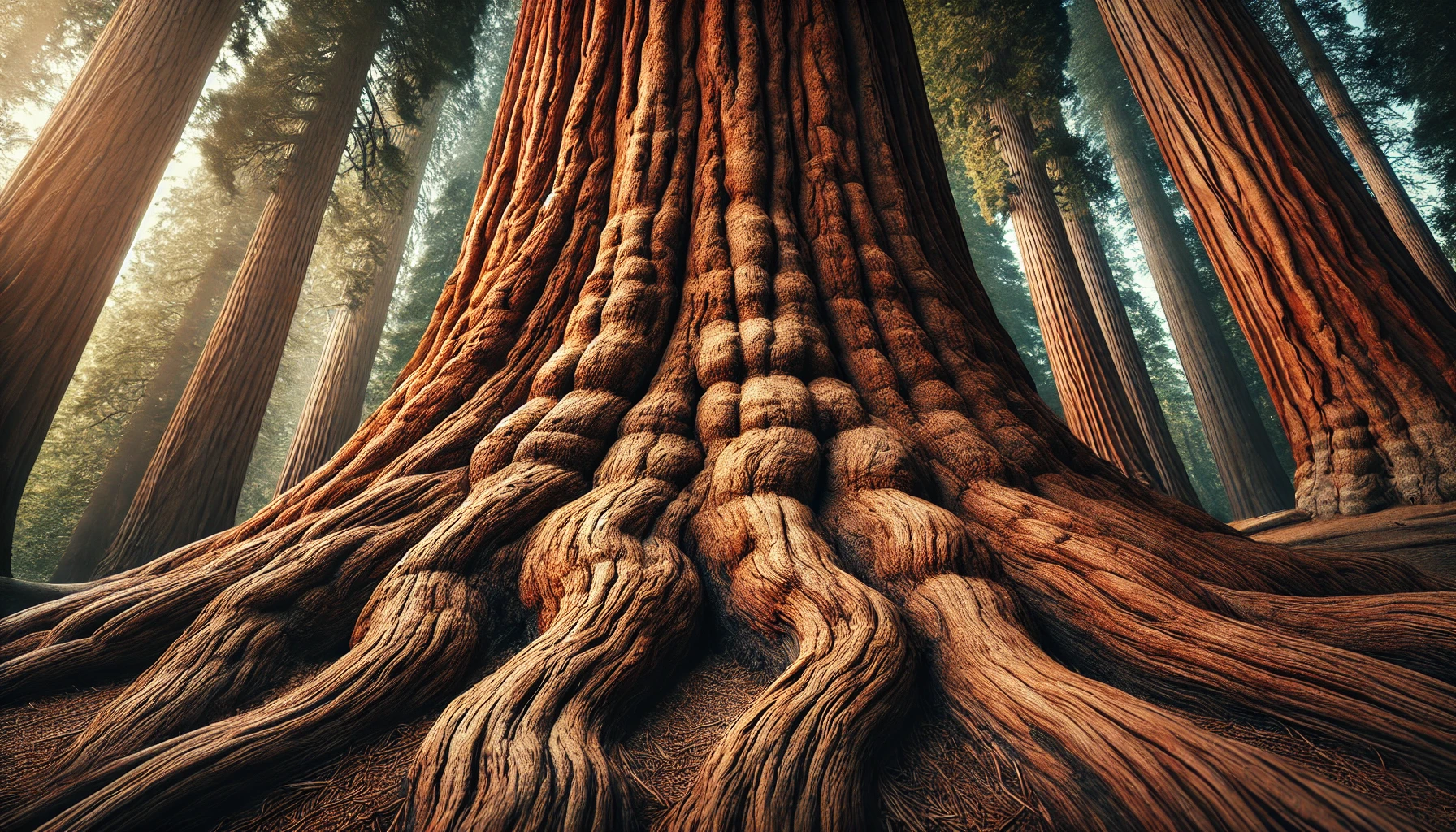
Here’s what makes them so special:
- Size: Sequoias are the largest trees in the world! Coast Sequoias can grow up to 300 feet tall, and Giant Sequoias can reach around 275 feet. They also have thick trunks, with some trees measuring more than 30 feet in diameter!
- Longevity: Sequoias are incredibly long-lived, with some trees living for over 3,000 years! This makes them one of the oldest living species on the planet.
- Resilience: Sequoia trees are surprisingly resilient. Their bark is thick and resistant to fire, which helps them survive in wildfire-prone areas. The trees’ seeds are also protected by cones that stay closed until exposed to fire.
- Adaptability: While these trees are native to California’s mild climate, they can thrive in different environments, including colder regions like Michigan, when properly cared for!
So, if you’re dreaming of planting a Sequoia in your Michigan backyard, know that with the right care and attention, these majestic trees can add beauty and wonder to your landscape!
Can a Sequoia Tree Thrive in Michigan? 
Sequoia trees are known for their massive size and impressive beauty, often found in the Pacific Coast regions of the U.S. But can they thrive in Michigan’s climate?
The short answer is yes, but with some important considerations. Michigan’s cold winters and unpredictable weather can be challenging for Sequoias, but it is possible to grow these majestic trees with the right care. Let’s break it down:
1. Climate Challenges 
Michigan’s winters are harsh, and Sequoias prefer mild, coastal climates. The cold temperatures can be tough on younger trees, especially if temperatures fall below freezing for extended periods. However, if you’re planting a mature Sequoia or protecting a young one, it can still flourish in Michigan.
2. Choosing the Right Location 
Sequoias need full sunlight to grow strong and healthy, so choose a spot in your yard with plenty of sun. The soil should be well-draining, rich in nutrients, and slightly acidic. Michigan’s soil tends to be alkaline, so consider amending it with compost or peat moss to improve its acidity and drainage.
3. Winter Protection 

To ensure your Sequoia survives Michigan’s cold winters, it’s essential to protect it. Wrapping the tree in burlap or using a tree guard can help shield it from harsh winds and snow. You might also want to mulch around the base of the tree to insulate its roots during the cold months.
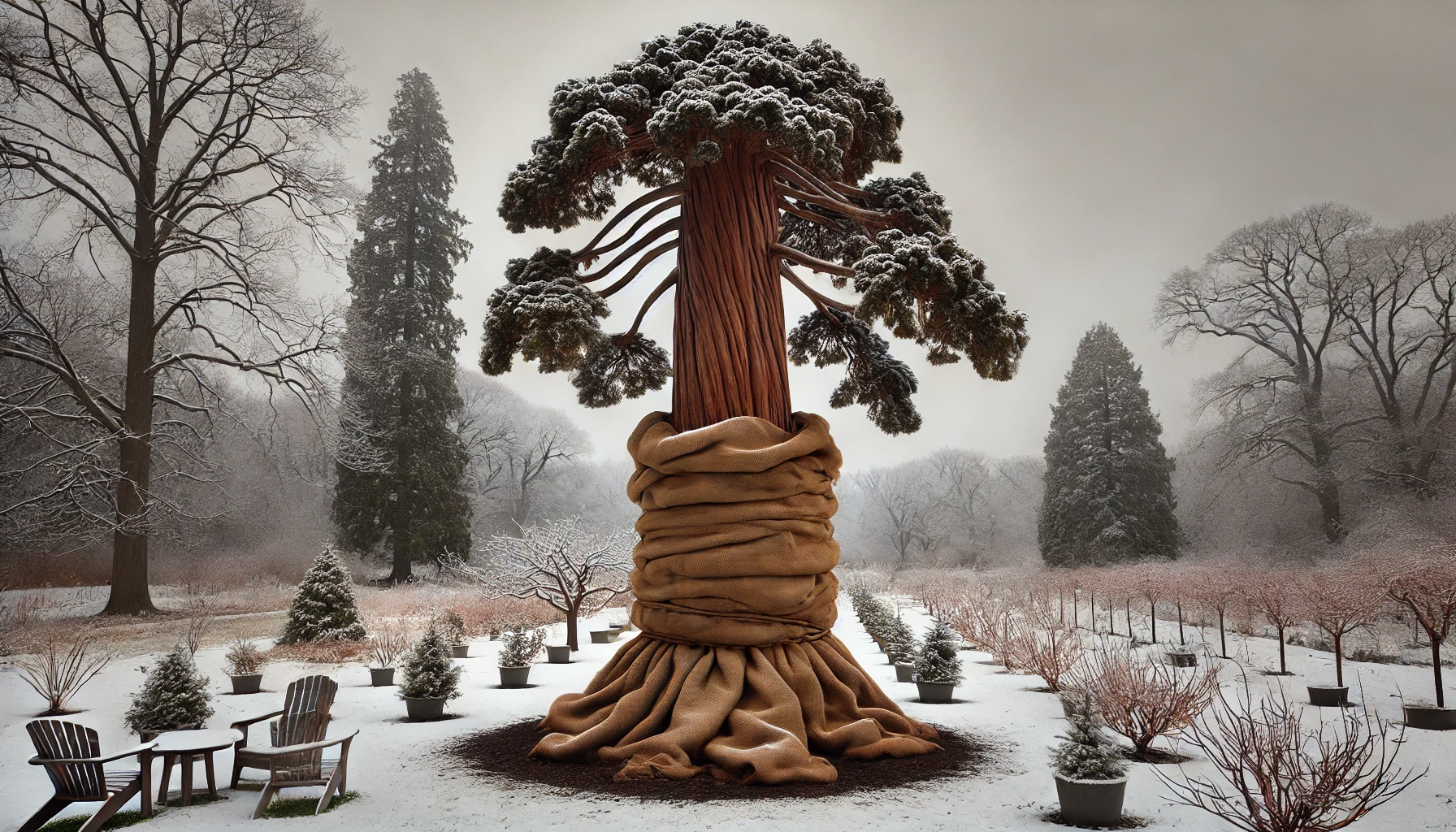
4. Watering and Maintenance 
Sequoias need consistent moisture, especially during dry spells. Be sure to water your tree regularly, but avoid overwatering as it can lead to root rot. Deep watering once a week is ideal, especially in Michigan’s summer heat.
5. Patience is Key 
Growing a Sequoia tree in Michigan may take longer than in its native habitat, but with patience, you can enjoy this towering beauty in your backyard. It may take a few years for it to reach full size, but once it does, your Sequoia will become a stunning focal point!
6. Alternative: Coast Redwood 
If you’re worried about the harsh winter conditions for Sequoias, you might want to consider planting a Coast Redwood instead. While both species are related, Coast Redwoods can sometimes tolerate cooler climates better and may be a more reliable choice for Michigan’s weather.
By selecting the right location, providing winter protection, and being mindful of water needs, you can definitely grow a Sequoia tree in Michigan! 
Choosing the Right Location for Your Sequoia Tree 
Selecting the ideal spot for your Sequoia tree is crucial for its growth and health, especially in Michigan’s unique climate. Here’s what to consider when picking the perfect place:
1. Space Is Key! 
Sequoias are massive trees that can grow to over 300 feet tall! 
2. Sunlight – A Sequoia’s Best Friend 
Sequoias love the sun! While they can tolerate some shade, they grow best when they receive full sunlight for at least 6 hours a day. Choose a spot that’s open and not overshadowed by taller structures or other trees, especially during the afternoon when the sun is at its peak.

3. Well-Draining Soil for Strong Roots 
Sequoias prefer moist, well-draining soil to help their roots grow strong and healthy. Sandy loam or loamy soil works great. Avoid areas where water tends to pool or where the soil becomes soggy after rain. If your soil isn’t ideal, consider amending it with compost or organic matter to improve drainage.
4. Protection from Harsh Winds 
While Sequoias are resilient, they can be vulnerable to strong winds, especially when they’re young. Consider planting your tree in a spot that’s sheltered from wind, such as near a building, fence, or natural windbreak (like a line of shrubs or smaller trees). This will help your Sequoia grow straight and strong.
5. Climate Considerations in Michigan 
Michigan’s winters can be harsh, but Sequoia trees can tolerate cold temperatures if they’re planted in the right spot. Ensure your tree is planted in a location that avoids extreme frost pockets—areas where cold air settles. Look for spots with slightly elevated ground to prevent frost damage to the roots in winter.
6. Avoid Low-Lying or Flood-Prone Areas 
Sequoias are sensitive to standing water, so avoid planting them in low-lying areas that are prone to flooding. This is especially important in Michigan’s wetter regions, where spring thaw or heavy rainfall could leave your tree’s roots submerged. Elevate the planting site if necessary to ensure proper drainage.
7. Consider Your Long-Term Vision 
As your Sequoia tree grows, it will not only impact the space around it but also your future landscaping plans. Think ahead about how the tree’s growth will affect nearby plants, walkways, or structures. If you’re planning a garden or patio near the tree, make sure there’s enough distance for both the Sequoia and your other plants to flourish.
By following these guidelines, you’ll set your Sequoia tree up for long-term health and growth. Happy planting!
Planting Your Sequoia Tree in Michigan 
Planting a Sequoia tree in Michigan can be a rewarding project, but there are some key things you’ll need to consider to give your tree the best chance to thrive in the local climate. These majestic giants, while native to coastal California, can adapt to Michigan’s conditions with a little care and attention. Here’s a step-by-step guide to help you plant your Sequoia tree successfully:
1. Choose the Right Location 
Sequoias need a lot of space to grow, so pick a spot that gives your tree plenty of room. Aim for a location where the tree will have access to full sunlight for at least 6 hours a day. Michigan’s harsh winters mean you’ll want to avoid low-lying areas prone to frost pockets, as Sequoias are sensitive to cold drafts. A well-draining site is essential, so avoid areas that tend to get waterlogged.
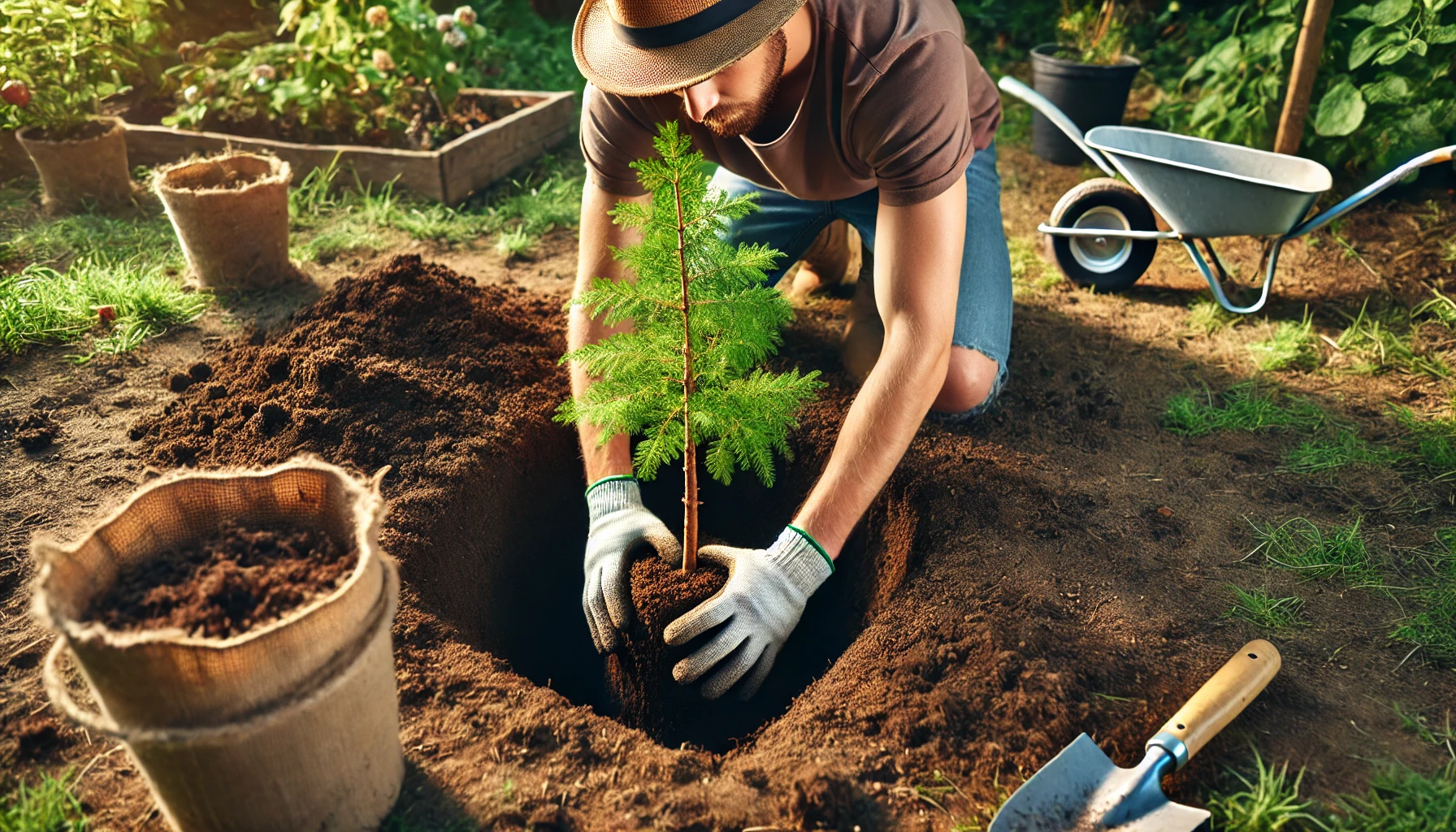
2. Prepare the Soil 
Sequoias prefer slightly acidic, loamy soil. If your soil is heavy clay or sandy, you can improve it by mixing in organic matter, such as compost or peat moss. This will not only help with drainage but also provide the necessary nutrients to support healthy growth. Test your soil’s pH if possible, and aim for a range of 5.5 to 6.5 for the best results.
3. Dig a Proper Hole 
When planting, make sure the hole is twice as wide as the root ball but no deeper. This allows the roots to spread out and establish themselves easily. Avoid planting your Sequoia too deep—its root flare (the point where the trunk meets the roots) should be level with or slightly above the surrounding soil. Proper planting depth is crucial to prevent rot.
4. Watering & Drainage 
After planting, water your Sequoia tree thoroughly to help settle the soil around the roots. Sequoias like a lot of moisture, but they also need good drainage. Ensure that the area around the tree doesn’t stay soggy, as standing water can lead to root rot. Water your tree regularly, especially during dry spells, but be mindful not to overwater.
5. Mulch for Protection 
Mulch helps to retain moisture, regulate soil temperature, and suppress weeds. Spread a 2-3 inch layer of organic mulch (like wood chips or bark) around the base of the tree, but make sure it doesn’t touch the trunk directly. This helps the roots stay cool and moist during hot Michigan summers and protects them from winter’s freeze-thaw cycles.
6. Protect from Harsh Winters 
Michigan winters can be brutal for young Sequoia trees, especially during the first few years of growth. Consider wrapping the trunk with burlap or a tree guard to protect it from freezing winds and frost. Snow can also provide a natural insulating layer, so don’t be alarmed if your Sequoia looks dormant or a bit “tired” in winter—it’s just resting!
7. Support During Growth 
While Sequoias can grow quickly, they need time to develop strong, sturdy roots. Consider staking your young tree if it’s in a windy area to help it stay upright. Over time, as the roots grow deeper, the need for staking will reduce. Just be sure to check periodically and remove stakes once your Sequoia is strong enough to stand on its own.
By following these steps and caring for your Sequoia tree, you’ll be well on your way to creating a magnificent centerpiece in your Michigan yard. 
Caring for Your Sequoia Tree in Michigan 
Growing a Sequoia tree in Michigan can be a rewarding experience, but it requires some special care due to the colder climate. Whether you’re planting a Giant Sequoia or a Coast Redwoods, these majestic trees can thrive in Michigan with the right attention. Here’s how to care for your Sequoia tree and ensure it grows strong and healthy in the Great Lakes State.
1. Choose the Right Location 
Sequoia trees need plenty of sunlight to grow, so pick a spot with full sun exposure (at least 6 hours of direct sunlight daily). Ensure the area has well-draining soil and is sheltered from strong winds. Sequoias grow tall, so avoid planting them too close to buildings or other trees. A spacious, open area will allow them to reach their full potential.
2. Planting Tips 
- Best Time to Plant: The best time to plant your Sequoia tree is in the spring, after the last frost, or in early fall. This gives the roots time to establish before winter sets in.
- Soil Requirements: Sequoias prefer slightly acidic to neutral soil (pH 6.0–7.5). You can amend the soil with compost to improve drainage and nutrients.
- Digging the Hole: Dig a hole twice as wide as the root ball and deep enough to ensure the tree is planted at the same level as it was in the pot. This prevents waterlogging and encourages healthy root growth.
3. Watering 
- Young Trees: Newly planted Sequoias need regular watering until their roots become established. Water deeply once a week during dry periods. In Michigan’s humid climate, you might not need to water as often once the tree matures.
- Established Trees: Once your Sequoia is established (usually after 2–3 years), it becomes more drought-tolerant. Water only during prolonged dry spells or if the tree shows signs of stress (like yellowing leaves).
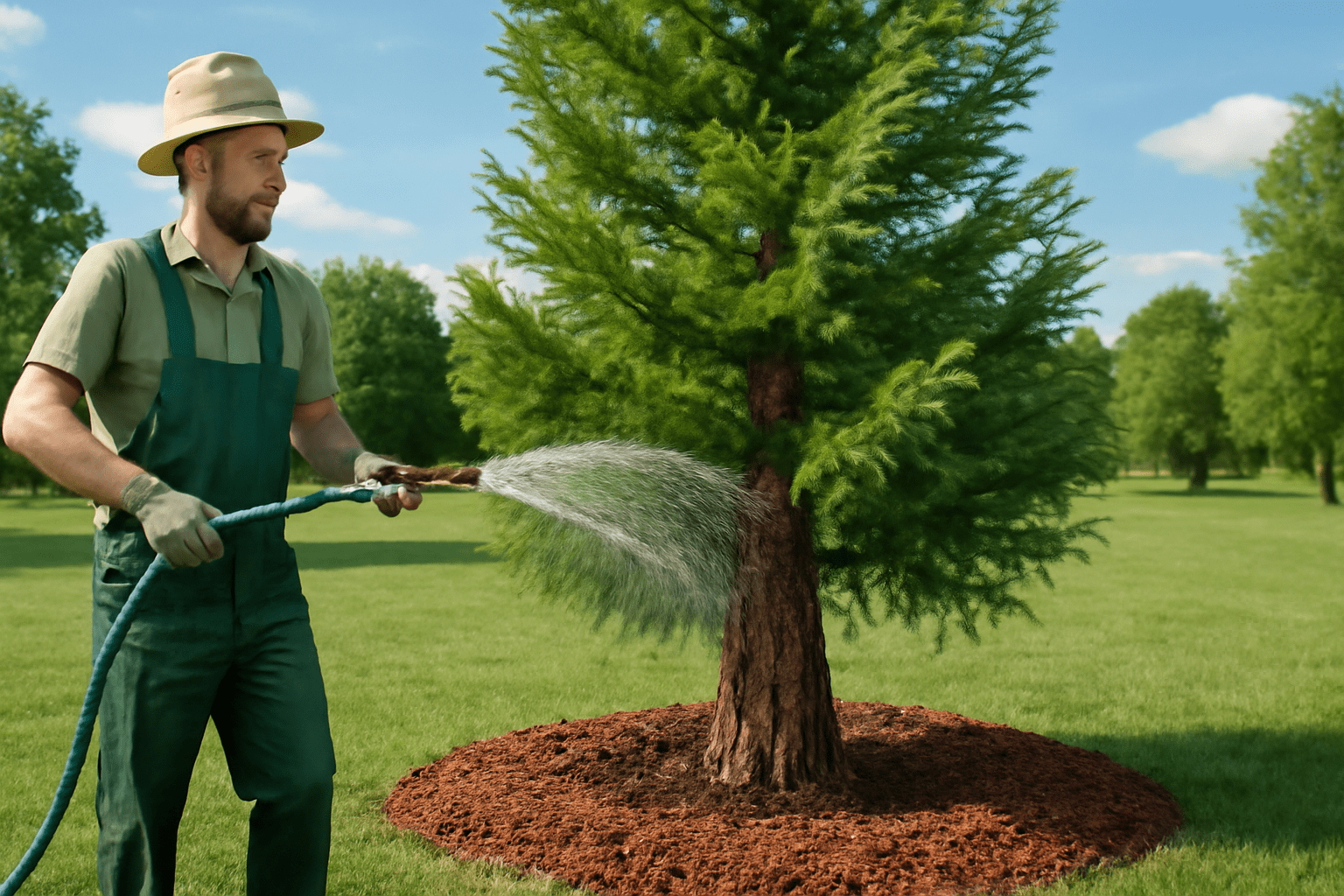
4. Winter Care 
Michigan winters can be harsh, and Sequoias are not naturally adapted to freezing temperatures. Here’s how to help them through the cold months:
- Mulch Around the Base: Apply a layer of mulch (3–4 inches) around the base of the tree to insulate the roots and protect them from frost. Avoid piling mulch directly against the trunk.
- Wrap Young Trees: For younger Sequoias, consider wrapping the trunk with burlap or tree wrap to protect it from freezing winds and sunscald.
5. Pruning and Maintenance 
- Remove Dead or Damaged Branches: Check for broken or dead branches, especially after winter storms, and prune them back to maintain the tree’s health and shape.
- Minimal Pruning: Sequoias are naturally beautiful trees with a graceful shape, so pruning is usually minimal. Only trim to remove damaged or diseased wood.
6. Fertilizing 
- Sequoia trees don’t need heavy fertilization. However, adding a slow-release fertilizer in early spring can give your tree a healthy boost. Avoid over-fertilizing, as this can encourage excessive growth that may be weak or prone to disease.
7. Protecting Against Pests and Diseases 
Sequoias are generally hardy, but they may face some pests and diseases, including:
- Aphids or Scale Insects: These tiny pests can harm your tree by sucking sap from the branches. Treat with insecticidal soap or neem oil to keep them at bay.
- Root Rot: Ensure the tree is planted in well-draining soil to avoid root rot. If you notice yellowing leaves or poor growth, check the roots for rot and improve drainage.
8. Be Patient 
Sequoias grow slowly, especially in Michigan’s climate, but with proper care, they can live for hundreds of years and grow to enormous heights. Patience is key when caring for your Sequoia – it’s a long-term investment in your landscape.
By following these care tips, your Sequoia tree will thrive in Michigan and become a majestic addition to your yard!
Happy gardening!
Common Problems and Troubleshooting 
Growing Sequoia trees in Michigan can be a rewarding experience, but it’s not without its challenges. Whether you’re a first-time grower or a seasoned gardener, problems can arise. Here are the most common issues and how to solve them, so your Sequoia tree thrives.
1. Yellowing Leaves 
Yellow leaves often signal a problem, and the most common causes are nutrient deficiencies or improper watering.
Solution:
- Nutrient Deficiency: Sequoia trees need a well-balanced fertilizer. If your tree’s leaves are turning yellow, try feeding it with a slow-release fertilizer rich in nitrogen and iron.
- Watering Issues: Overwatering or underwatering can stress your Sequoia. Ensure the soil drains well and water only when the top inch of soil feels dry. Consistent watering is key!
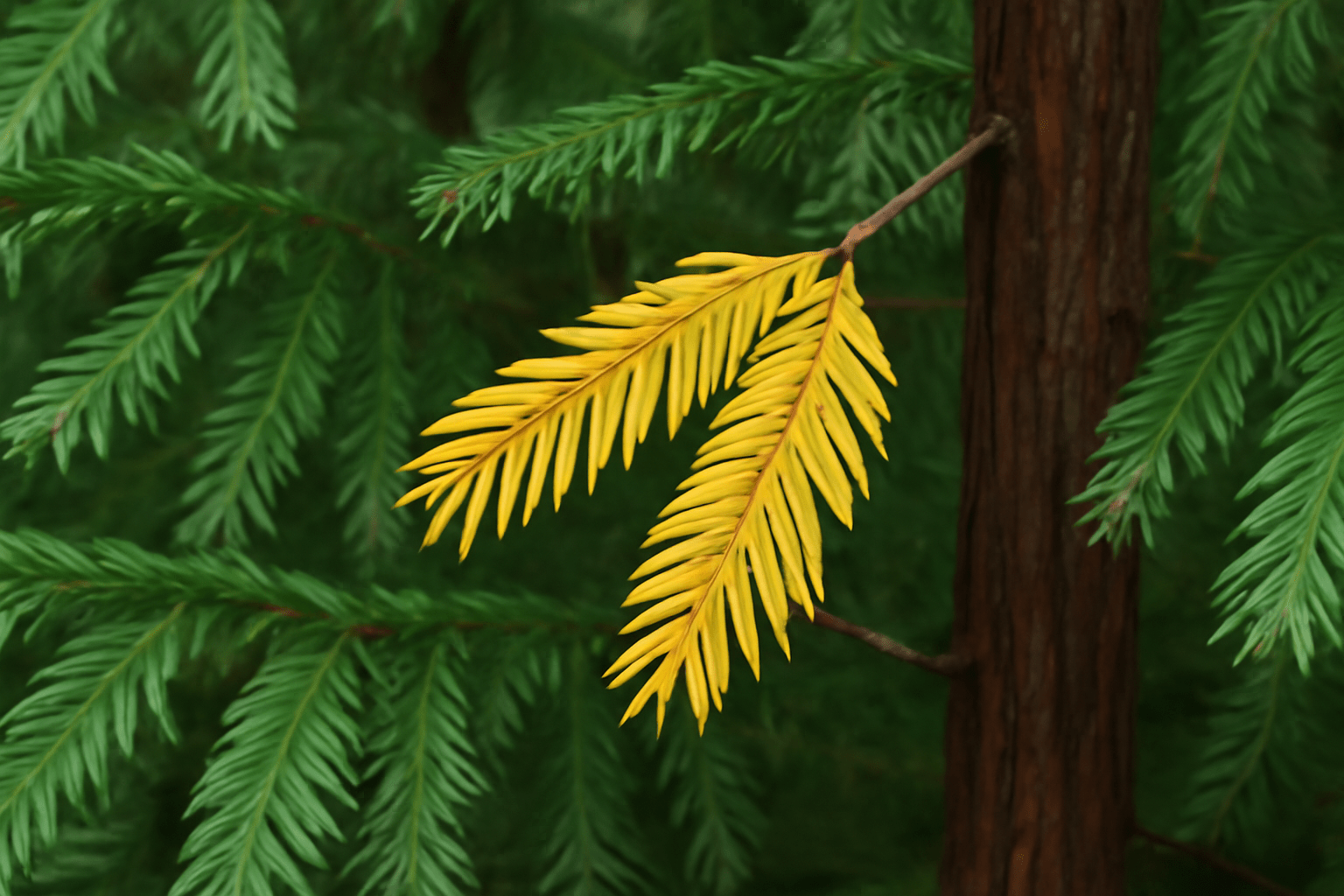
2. Root Rot 
Overwatering or poor drainage can lead to root rot, which is one of the most dangerous problems for Sequoias.
Solution:
- Ensure your Sequoia is planted in well-draining soil. If the soil doesn’t drain well, consider amending it with sand or compost to improve drainage.
- If you suspect root rot, carefully remove the tree from the soil and inspect the roots. Trim off any blackened or mushy roots. Repot the tree in fresh soil with better drainage.
3. Pests 
While Sequoias are generally pest-resistant, they can still attract certain insects like aphids, spider mites, or scale insects.
Solution:
- Aphids & Spider Mites: Use a strong jet of water to wash pests off the leaves. If the infestation persists, apply an insecticidal soap or neem oil to your tree.
- Scale Insects: Use a cotton ball soaked in rubbing alcohol to remove scale insects from the bark.
4. Winter Damage 
Michigan winters can be harsh, and Sequoia trees are not native to cold climates. Frost damage can be a real issue, especially if the tree is young.
Solution:
- Mulching: To protect the roots from freezing, apply a thick layer of mulch around the base of the tree in the fall. This helps insulate the soil and keep the roots warmer.
- Winter Protection: Wrap your young Sequoia with burlap or frost cloth during the coldest months to shield it from wind and frost damage.
5. Stunted Growth 
If your Sequoia isn’t growing as expected, there could be several reasons for the issue, from poor soil to insufficient sunlight.
Solution:
- Soil: Sequoias need slightly acidic to neutral soil. Test your soil pH, and if needed, amend the soil to create an optimal growing environment.
- Sunlight: Ensure your tree gets enough sunlight—Sequoias thrive in full sun. If your tree is shaded by nearby structures or other trees, consider relocating it to a sunnier spot.
6. Browning Tips 
Browning on the tips of the branches can be a sign of stress, often from environmental factors or poor soil conditions.
Solution:
- Water Stress: Check the watering schedule. If the tree is stressed due to lack of water or sudden drought, increase watering, especially during dry periods.
- Fertilization: Make sure your Sequoia is receiving the necessary nutrients. Apply a slow-release, balanced fertilizer to help support growth and repair damaged tissue.
Final Thoughts 
Growing a Sequoia tree in Michigan may come with challenges, but with the right care and attention, you can overcome these problems and enjoy the majestic beauty of this magnificent tree. Stay proactive, monitor for signs of trouble, and take action early to keep your Sequoia healthy and strong!
Conclusion
Planting a sequoia tree in Michigan is a rewarding experience that, with the right knowledge and care, can transform your landscape into something truly spectacular. By following the steps outlined in this guide—choosing the ideal location, planting the tree correctly, and providing the necessary care—you’ll be setting your sequoia up for success. While Michigan’s climate presents some unique challenges, with the right attention, your sequoia can thrive and grow into a beautiful, towering tree that will be the pride of your yard for years to come.
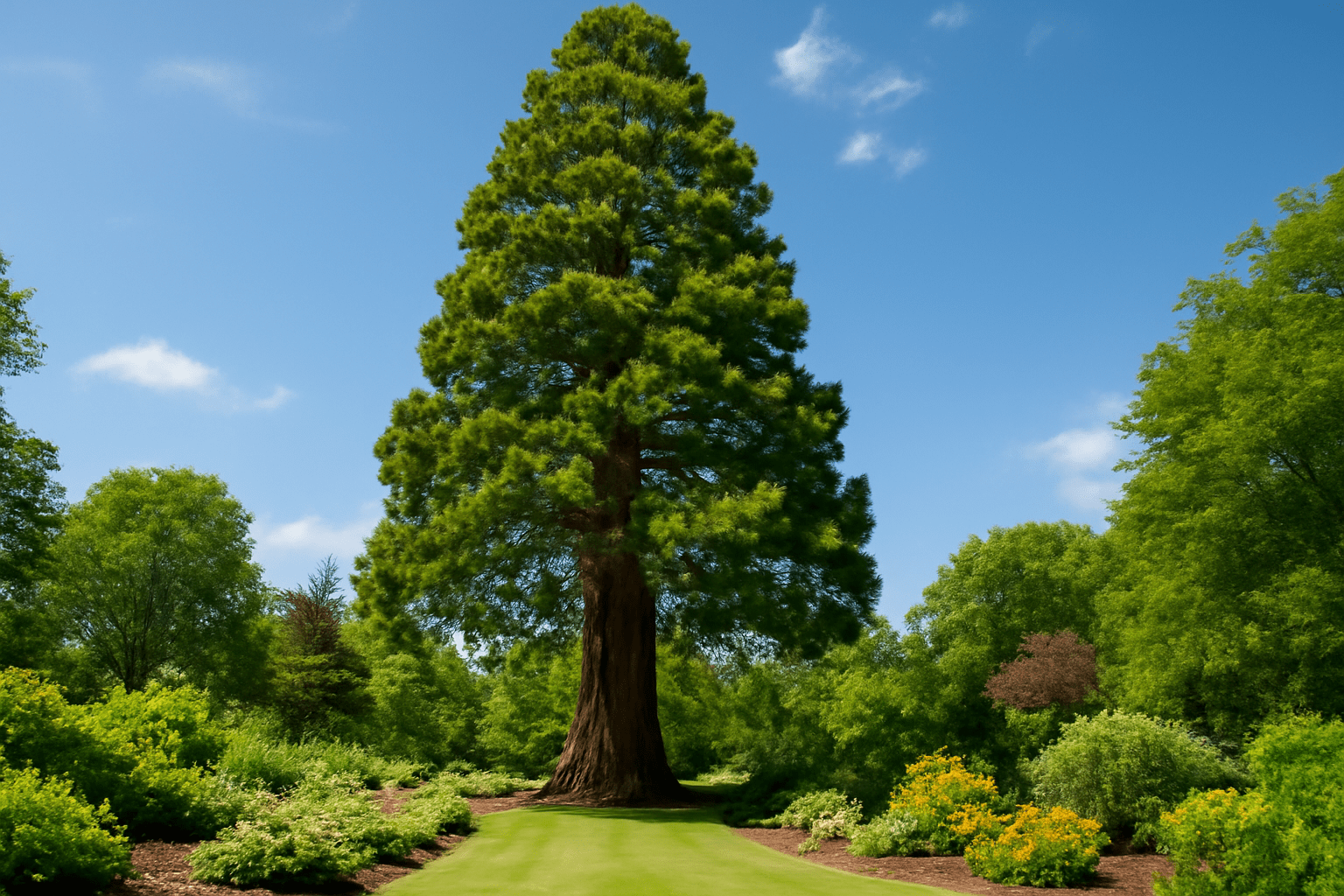
Remember, patience is key when growing a sequoia tree. It may take time for your tree to establish itself, but with consistent care, it will flourish. Start today, and enjoy the beauty and grandeur of a thriving sequoia tree in your Michigan garden! Happy planting!
Frequently Asked Questions(FAQ)
Can a Sequoia tree survive Michigan winters?
Yes, Sequoia trees can survive Michigan winters with proper care, especially in the southern parts of the state. To protect your tree from harsh winds and cold temperatures, apply a thick layer of mulch around the base and consider wrapping the tree in burlap for additional protection.
What’s the best time to plant a Sequoia tree in Michigan?
The best time to plant a Sequoia tree in Michigan is during early spring or late fall. Planting during these seasons allows the tree to establish its roots before the heat of summer or the freeze of winter.
How much sunlight does a Sequoia tree need in Michigan?
Sequoia trees need full sunlight, ideally 6-8 hours of direct sun per day. Ensure the planting location receives adequate sunlight to help the tree thrive and develop strong growth.
What type of soil is ideal for a Sequoia tree in Michigan?
Sequoia trees prefer well-draining, slightly acidic to neutral soil. Before planting, improve the soil’s drainage by mixing in organic matter like compost or peat moss if the soil is too heavy or clay-based.
How often should I water my Sequoia tree in Michigan?
Water your Sequoia tree regularly, especially during dry periods in its first few years. Keep the soil moist but not soggy. As the tree matures, it will become more drought-tolerant but still requires periodic watering during hot months.
How can I protect my Sequoia tree from pests in Michigan?
While Sequoia trees are generally resistant to many pests, they can still be affected by aphids and scale insects. Inspect your tree regularly for pests and use organic treatments like neem oil if necessary to keep it healthy.
What should I do if my Sequoia tree’s leaves are turning yellow?
Yellowing leaves can be a sign of over-watering, poor drainage, or a nutrient deficiency. Check your watering schedule and soil quality, and ensure your tree isn’t sitting in soggy soil. Fertilize with a balanced fertilizer to address any nutrient gaps.
How fast will my Sequoia tree grow in Michigan?
Sequoia trees grow at a moderate pace, averaging 1-2 feet per year in Michigan’s climate. With proper care, your tree will slowly reach its full height of 30-50 feet or more over several decades, depending on the growing conditions





